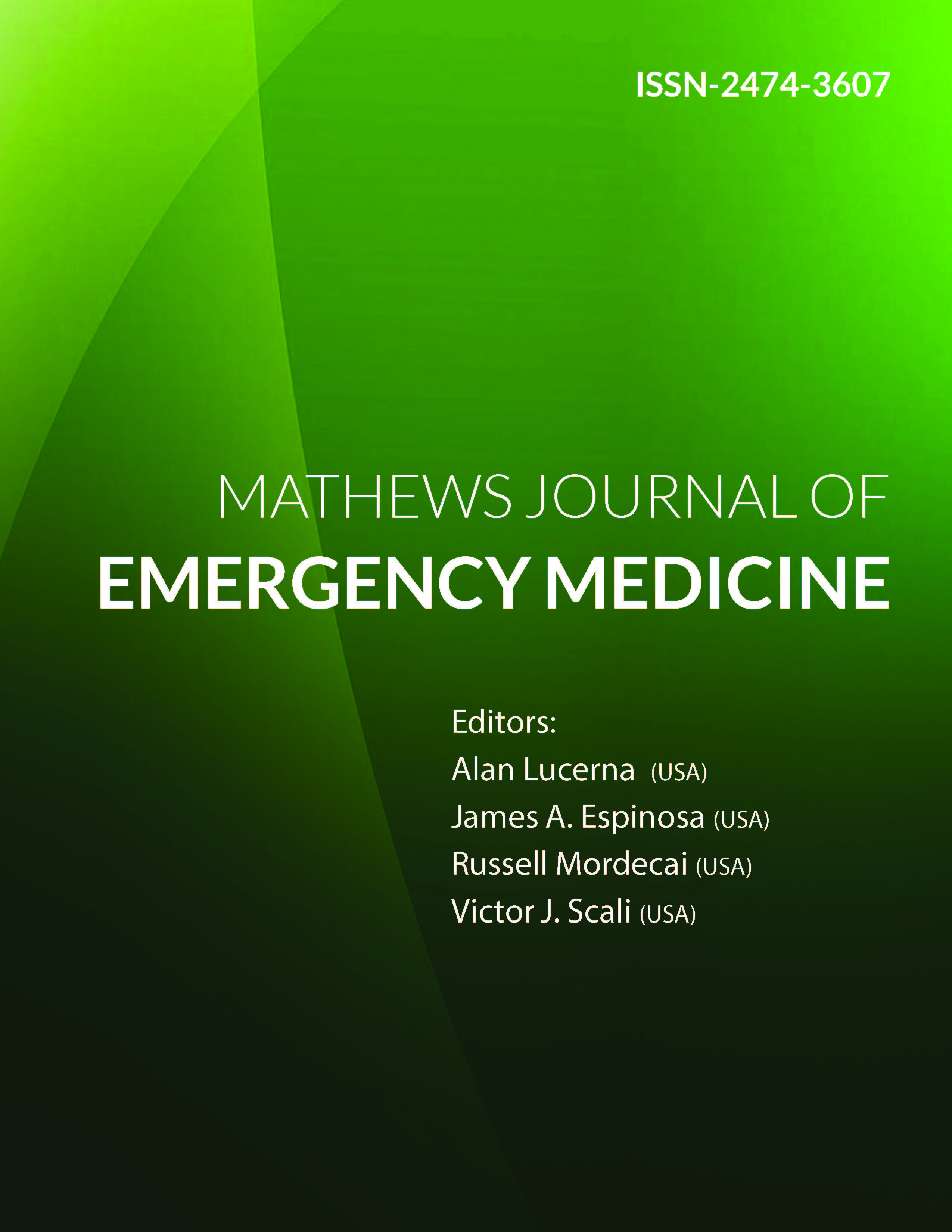
Information Links
Previous Issues Volume 1, Issue 2 - 2016
A Novel Educational Interventional Approach Using Standard Didactic Teaching Associated With Video Based-Simulations to Improve Understanding of the Management of Combative Patients, Use of Restraint Protocols, Violence Prevention and De-escalation in the Emergency Department
Michael Garcia1 , James Espinosa2 , Victor Scali3
1Emergency Physician, Emergency Medicine, Team Health, Knoxville, TN, USA.
2Department of Emergency Medicine, Rowan University SOM Kennedy University Hospital, Stratford, NJ, USA.
3Program Co-Director, Emergency Medicine Residency, Rowan University SOM, Stratford, NJ, USA.
Corresponding Author: James Espinosa, Department of Emergency Medicine, Rowan University SOM Kennedy University Hospital, 18 East Laurel Road, Stratford, NJ 08084, USA, Tel: +1 646 241 5695; E-Mail: [email protected]
Received Date:05 Mar 2016
Accepted Date:29 Mar 2016
Published Date:11 Apr 2016
Copyright © 2016 Espinosa J
Citation: Garcia M, Espinosa J and Scali V. (2016). A Novel Educational Interventional Approach Using Standard Didactic Teaching Associated With Video Based-Simulations to Improve Understanding of the Management of Combative Patients, Use of Restraint Protocols, Violence Prevention and De-escalation in the Emergency Department. Mathews J Emergency Med. 1(1): 007.
ABSTRACT
Violent encounters and difficult patients have long been a reality for the physician and staff members of an emergency department. There is a special didactic challenge embedded in the knowledge base associated with teaching the management of ED violence, restraint protocols and violence prevention and de-escalation. Learning objectives should ideally be transmitted in the context of sensitivity to the difficult and potential violent patient. This is especially important in the care of the patient with special needs. Issues such as distancing and pacing in the approach to a patient are problems in special relationships (known as "proxemics") that would be predictably difficult to convey on a slide.
There is, however, a way to integrate traditional slide-based approaches with video-based scenarios. The objective of this research project was to create and evaluate the efficacy of using video based story telling combined with standard didactic teaching to specifically enhance the understanding of the knowledge base in emergency medicine related to the management of the violent patient. The intervention, combining standard slide based and video based modalities, showed a pretest average score was 51.3 percent. The post-test average score was 89.1 percent. The difference was very highly significant, based on a paired (two sample) T-test using pre and post scores, by participant. (P = < 0.001) The participants showed extremely high levels of agreement with three survey questions related to the video-based clips per se. The three questions used a 5 part Likert scale, where: 5 = highly agree, 4 = agree, 3 = neutral, 2 = disagree, 1 = highly disagree
Specifically, the participants showed a very high level of agreement that video-based storytelling clips added to [the] understanding of the presentation. The average score for this question was 4.63.The participants showed a very high level of agreement that the video-based storytelling clips were of high quality. The average score for this question was 5.0. The participants showed a very high level of agreement that video-based storytelling clips could be used in other presentations to enhance learning and understanding. The average score for this question was 4.9.
This approach may be useful in other venues, with other audiences, such as nursing, security, hospital-based teaching of policies and protocols, etc.